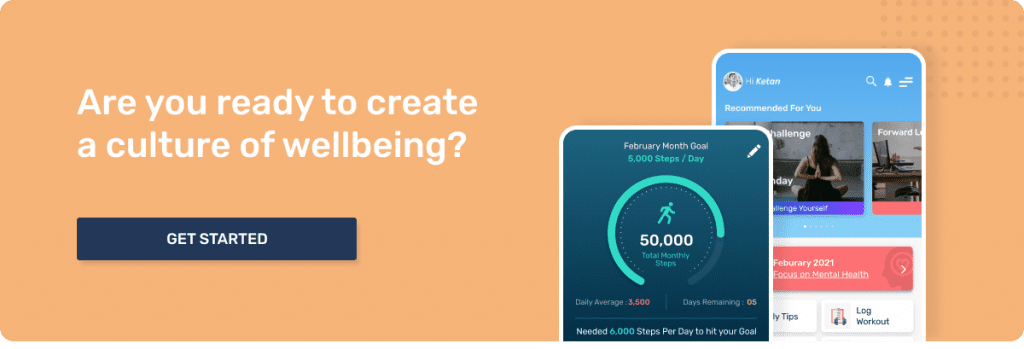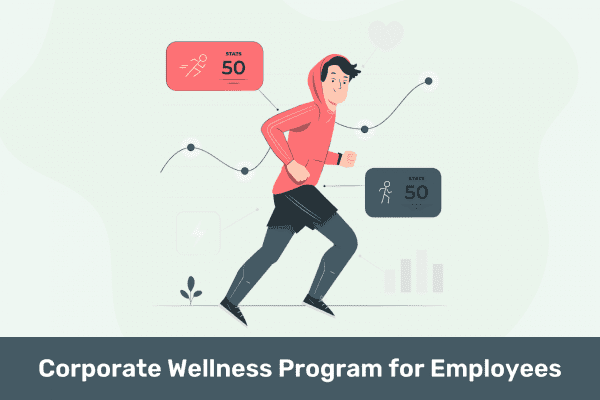Introduction
In an era where the boundaries between professional and personal life blur, the concept of creating a culture of wellness in the workplace has become not only a buzzword but a critical necessity for organizations striving to enhance employee satisfaction, productivity, and overall success. As we delve into the intricacies of fostering a healthy and supportive work environment, it is imperative to acknowledge the compelling statistics that underscore the significance of prioritizing employee well-being.
Recent studies have revealed alarming figures indicating the toll that stress and burnout can take on the workforce. According to a survey conducted by the American Institute of Stress, a staggering 83% of employees in the United States suffer from work-related stress, leading to a decline in productivity and a surge in absenteeism. Moreover, the World Health Organization reports that depression and anxiety disorders cost the global economy an estimated $1 trillion in lost productivity each year.
However, amidst these challenges lies an opportunity for organizations to reshape the narrative by consciously adopting strategies aimed at creating a culture of wellness. Companies that prioritize employee well-being not only witness a boost in morale and job satisfaction but also experience a tangible impact on their bottom line. Harvard Business Review reports that for every dollar invested in employee wellness programs, companies can yield a return of up to $6 in healthcare cost savings and increased productivity.
As we embark on this exploration, we will uncover the key components of building a culture of wellness, emphasizing the transformative power it holds for both individuals and the organizations they contribute to.
What is a Culture of Wellness?

A Culture of Wellness refers to a holistic approach within an organization that prioritizes and actively promotes the well-being of its employees. It goes beyond traditional healthcare benefits and encompasses a broader spectrum of physical, mental, and emotional health. In a workplace with a strong culture of wellness, there is a collective commitment to creating an environment that supports employees in achieving and maintaining a healthy lifestyle.
Importance of Creating a Culture of Wellness in the Workplace
Creating a culture of wellness in the workplace is of paramount importance in today’s dynamic and demanding business landscape. The significance of prioritizing employee well-being extends far beyond altruism; it directly correlates with organizational success and sustainability. Here are key reasons highlighting the importance of creating a culture of wellness:
Enhanced Employee Productivity:
-
- Well-being positively impacts cognitive function, focus, and energy levels. Employees who feel physically and mentally well are more likely to be productive and perform at their best.
- Reduced stress levels result in improved decision-making and problem-solving abilities, contributing to a more efficient and effective workforce.
Increased Employee Engagement:
-
- A culture of wellness promotes a sense of belonging and engagement among employees. When an organization demonstrates a genuine commitment to its employees’ well-being, it cultivates a positive work environment, leading to higher job satisfaction and motivation.
Talent Attraction and Retention:
-
- In a competitive job market, prospective employees are increasingly prioritizing employers that value their well-being. A robust wellness program can be a powerful tool for attracting top talent and retaining skilled professionals, ultimately reducing recruitment and training costs.
Reduction in Healthcare Costs:
-
- Proactive wellness initiatives can lead to lower healthcare costs for both employers and employees. Preventive measures, health screenings, and lifestyle interventions can mitigate the need for expensive medical treatments and reduce absenteeism due to illness.
Improved Company Culture:
-
- A workplace that prioritizes wellness sends a positive message about its values and commitment to employees. This, in turn, contributes to the development of a positive company culture characterized by trust, collaboration, and a shared commitment to well-being.
Decreased Absenteeism:
-
- Healthy employees are less likely to take sick leave, reducing absenteeism and the associated costs. A focus on preventive care and wellness initiatives can lead to fewer instances of illness and a more present and engaged workforce.
How do you create a culture of wellness in the workplace?
Creating a culture of wellness in the workplace involves a comprehensive and sustained effort that addresses various aspects of employee well-being. Here’s a step-by-step guide to help you establish and nurture a culture of wellness within your organization:
1. Leadership Commitment

Leadership commitment is a fundamental pillar in the establishment of a culture of wellness within the workplace. It involves the active engagement and support of organizational leaders in promoting and prioritizing the well-being of employees. When leaders are committed to wellness initiatives, it sends a powerful message throughout the organization, influencing the overall work culture and employee behavior.
-
- Leadership Training: Leaders should be educated on the significance of workplace wellness, understanding how employee well-being directly impacts productivity, morale, and organizational success.
-
- Awareness of Benefits: A committed leadership team comprehends the positive outcomes of a wellness culture, including improved employee engagement, reduced absenteeism, and enhanced overall organizational performance.
-
- Active Participation: Leadership commitment involves leaders actively participating in wellness programs, demonstrating healthy behaviors, and serving as role models for employees.
-
- Visible Support: When leaders visibly support and engage in wellness initiatives, it sends a powerful message to the entire organization, reinforcing the importance of a healthy lifestyle.
-
- Incorporating Wellness: Leadership commitment extends to integrating wellness into the core values and mission of the organization. This ensures that wellness is not just a program but a fundamental aspect of the company culture.
-
- Alignment with Goals: Leaders align wellness initiatives with broader organizational goals, emphasizing how a healthy workforce contributes to the achievement of strategic objectives.
-
- Advocating for Wellness: Committed leaders actively advocate for wellness within the organization, emphasizing its importance in employee satisfaction and organizational success.
-
- Clear Communication: Leadership communicates openly about wellness initiatives, ensuring that employees are aware of the resources available, the benefits of participation, and the organization’s commitment to their well-being.
-
- Strategic Planning: Leaders incorporate wellness considerations into strategic planning and decision-making processes. This includes allocating resources, setting priorities, and assessing the impact of decisions on employee health and well-being.
2. Assessment and Employee Input

Assessment and Employee Input are crucial steps in the process of creating a culture of wellness in the workplace. These steps involve gathering information about the current state of employee well-being, understanding their needs, and incorporating their input into the development of wellness initiatives.
-
- Surveys and Feedback: Conducting regular surveys allows organizations to gather valuable insights directly from employees regarding their wellness needs, preferences, and concerns. Questions can cover topics such as current well-being, interest in specific programs, and perceived areas for improvement.
-
- Health and Productivity Metrics: Analyzing health and productivity metrics provides a quantitative perspective on the overall well-being of the workforce. Metrics may include absenteeism rates, healthcare utilization, and productivity measures. This data helps identify specific wellness challenges and assess the impact of existing initiatives.
-
- Employee Participation in Wellness Committees: Establishing wellness committees of employees from various departments fosters a collaborative approach. These committees can serve as a platform for ongoing feedback, idea generation, and the co-creation of wellness initiatives tailored to the organization’s unique culture.
-
- Focus Groups and Interviews: Conducting focus groups and one-on-one interviews allows for in-depth exploration of employee perspectives. This qualitative approach provides nuanced insights into the factors influencing well-being, uncovering issues that might not be apparent through surveys alone.
-
- Utilizing Technology for Real-time Feedback: Implementing digital tools and platforms enables organizations to collect real-time feedback on wellness programs and initiatives. Quick polls, suggestion boxes, or interactive forums can facilitate continuous communication, allowing employees to share their thoughts and experiences as they engage with wellness activities.
3. Develop a Wellness Program

Developing a wellness program involves creating a structured and inclusive framework that not only addresses immediate health concerns but also promotes sustained behavioral changes.
Comprehensive Wellness Initiatives:
-
- Diverse Components: Develop a program that addresses various aspects of wellness, including physical, mental, and emotional health. Include fitness programs, mental health resources, and nutritional education to cater to the holistic well-being of employees.
Customization Based on Employee Needs:
-
- Tailored Approach: Customize wellness initiatives based on the specific needs and interests of your workforce. Consider conducting surveys or focus groups to understand the unique wellness challenges and preferences within your organization.
Accessibility and Inclusivity:
-
- Universal Access: Ensure that the wellness program is accessible to all employees, regardless of their role, location, or abilities. Implement initiatives that cater to diverse demographics and levels of fitness or health awareness.
Communication and Education:
-
- Transparent Communication: Clearly communicate the goals and benefits of the wellness program to employees through various channels. Provide ongoing education on health and wellness topics to empower employees to make informed choices.
Incentives and Recognition:
-
- Motivational Strategies: Incorporate incentive programs to motivate employees to participate in wellness activities. Recognize and celebrate individual and team achievements related to wellness, creating a positive and supportive atmosphere that encourages continued engagement.
4. Communication and Education

Effective communication and education are foundational elements that empower employees to actively participate in wellness programs and contribute to the overall success of a workplace well-being culture.
Promote Awareness:
-
- Objective: Increase awareness among employees about the importance of wellness and the available programs.
- Strategies: Utilize various communication channels (newsletters, emails, intranet) to regularly share information about wellness initiatives, benefits, and success stories.
- Outcome: Employees are informed and motivated to actively engage in wellness activities, fostering a culture of well-being.
Educate Employees:
-
- Objective: Provide employees with relevant information and resources to make informed decisions about their health.
- Strategies: Conduct workshops, webinars, or seminars on topics such as stress management, nutrition, and work-life balance. Distribute educational materials and resources.
- Outcome: Employees acquire knowledge and skills to improve their well-being, contributing to a healthier and more informed workforce.
Clear Communication of Policies:
-
- Objective: Ensure employees understand policies that support wellness and work-life balance.
- Strategies: Clearly communicate flexible work arrangements, remote work policies, and other initiatives that facilitate a healthy work-life balance.
- Outcome: Employees feel supported in managing their work and personal responsibilities, reducing stress and enhancing overall well-being.
Interactive Wellness Platforms:
-
- Objective: Facilitate ongoing communication and engagement through digital platforms.
- Strategies: Implement user-friendly wellness platforms that allow employees to access resources, track their wellness activities, and engage in discussions with peers.
- Outcome: A connected and engaged workforce with easy access to wellness information and opportunities for interaction.
Feedback Mechanisms:
-
- Objective: Establish channels for two-way communication to gather feedback and assess the effectiveness of wellness initiatives.
- Strategies: Conduct surveys, focus groups, or feedback sessions to understand employee perspectives on wellness programs. Use this feedback to make data-driven adjustments.
- Outcome: Continuous improvement of wellness initiatives based on employee input, fostering a culture that responds to the evolving needs of the workforce.
5. Create a Supportive Environment

A supportive workplace culture contributes to employee retention, productivity, and the overall success of the organization.
Flexible Policies:
-
- Implement policies that support work-life balance, such as flexible work hours, compressed workweeks, or remote work options.
- Recognize the diverse needs of employees and offer flexibility to accommodate personal responsibilities and lifestyle preferences.
Social Connections:
-
- Create a sense of community by organizing team-building activities, social events, and collaborative projects.
- Encourage positive relationships among colleagues, as strong social connections contribute to a supportive and engaging work environment.
Open Communication:
-
- Create an environment where employees feel comfortable discussing wellness-related topics, including stress, mental health, and work-related challenges.
- Establish channels for open communication, such as regular team meetings, forums, or confidential avenues for employees to express concerns.
Leadership Visibility:
-
- Ensure that leaders actively participate in and endorse wellness initiatives, reinforcing the organization’s commitment to employee well-being.
- Leadership visibility sends a powerful message, emphasizing the importance of wellness and setting a positive example for the entire workforce.
Recognition and Appreciation:
-
- Acknowledge and celebrate employees’ efforts and achievements related to wellness initiatives.
- Incorporate wellness achievements into existing recognition programs, reinforcing a positive culture where well-being is valued and appreciated.
6. Provide Resources

Providing a diverse array of resources ensures that employees have the support they need to address different aspects of their well-being, creating a culture that genuinely cares about and invests in the health of its workforce.
-
- Health Services: Offering on-site health services or establishing partnerships with healthcare providers ensures that employees have convenient access to medical care and preventive services. This can include regular Health Risk Assessments, health check-ups, vaccinations, and consultations, contributing to proactive health management.
-
- Wellness Platforms: Utilizing digital wellness platforms provides a centralized hub for employees to access resources, track wellness activities, and engage in community discussions. These platforms may offer features such as health challenges, educational content, and progress tracking, enhancing the overall employee experience in their wellness journey.
-
- Educational Resources: Providing employees with comprehensive educational resources on various wellness topics is crucial. These resources can include articles, webinars, and workshops covering areas such as stress management, nutrition, exercise routines, and mental health. Well-informed employees are better equipped to make healthy lifestyle choices.
-
- Employee Assistance Programs (EAPs): Implementing EAPs ensures that employees have confidential access to counseling services and mental health support. EAPs can address a variety of personal and work-related issues, promoting a culture that recognizes and prioritizes mental and emotional well-being.
-
- Flexible Work Arrangements: Flexible work policies and arrangements can be considered valuable resources for employees seeking to balance their professional and personal lives. This might include options for remote work, flexible hours, or compressed workweeks. These arrangements contribute to reduced stress and improved work-life balance.
7. Incentives and Recognition

Incentives and recognition provide tangible and intangible rewards that not only motivate employees to actively participate in wellness programs but also contribute to building a positive and appreciative workplace culture. This approach reinforces the organization’s commitment to employee well-being and encourages a sustained focus on maintaining a healthy lifestyle.
Motivational Incentive Programs:
-
- Design Engaging Programs: Develop incentive programs that motivate employees to participate in wellness activities. This could include challenges, competitions, or reward systems tied to achieving health-related goals.
Tangible Rewards for Wellness Achievements:
-
- Offer Meaningful Incentives: Provide tangible rewards for employees who actively engage in wellness initiatives and demonstrate positive health outcomes. These incentives could range from gift cards and wellness-related products to additional time off or flexible work arrangements.
Recognition for Individual and Team Achievements:
-
- Acknowledge Efforts and Milestones: Recognize and celebrate both individual and team achievements in wellness. Highlighting milestones, such as weight loss, fitness accomplishments, or consistent participation, creates a positive and supportive atmosphere.
Peer-to-Peer Recognition:
-
- Encourage Peer Acknowledgment: Foster a culture where employees can recognize and appreciate each other’s wellness efforts. Peer-to-peer recognition can enhance camaraderie and create a supportive network within the workplace.
Integration with Performance Reviews:
-
- Tie Wellness to Performance: Consider integrating wellness achievements into performance evaluations. Acknowledging employees’ commitment to their well-being during performance reviews reinforces the importance of a healthy lifestyle within the organization.
8. Training and Development

Training initiatives should empower employees to take an active role in their health while fostering a workplace culture that prioritizes ongoing learning and development.
Wellness Workshops:
-
- Objective: Implement targeted workshops focusing on various aspects of wellness, such as stress management, mindfulness, and mental health awareness.
- Benefits: Equip employees with practical tools and strategies to navigate stressors, promote mental well-being, and cultivate healthy habits.
Skill Building:
-
- Objective: Offer training sessions that enhance skills related to time management, resilience, and coping mechanisms, encouraging a proactive approach to maintaining well-being.
- Benefits: Empower employees with the skills needed to balance work and personal life, manage workload effectively, and navigate challenges with resilience.
Holistic Training Programs:
-
- Objective: Develop comprehensive training programs that address physical, mental, and emotional wellness, promoting a holistic understanding of well-being.
- Benefits: Ensure employees receive a well-rounded education on various aspects of wellness, encouraging a balanced and integrated approach to health.
Professional Development Opportunities:
-
- Objective: Integrate wellness-related components into broader professional development programs, emphasizing the connection between personal well-being and professional growth.
- Benefits: Demonstrate the organization’s commitment to the overall development of employees by intertwining career advancement with individual health and wellness.
Continuous Learning Culture:
-
- Objective: Promote a culture of continuous learning and improvement by providing ongoing opportunities for employees to acquire knowledge about emerging wellness trends and practices.
- Benefits: Encourage employees to stay informed about the latest developments in wellness, ensuring that the organization’s wellness initiatives remain relevant and effective over time.
9. Regular Evaluation and Adjustment

Regular evaluation and adjustment demonstrate a commitment to responsiveness and improvement, reinforcing the organization’s dedication to fostering a culture of wellness that truly meets the needs of its workforce.
-
- Assessment Tools: Implement regular assessments using surveys, focus groups, and other feedback mechanisms to gauge employee satisfaction and the effectiveness of wellness programs. Use quantitative and qualitative data to identify trends and areas for improvement.
-
- Employee Feedback: Encourage open communication channels to collect feedback directly from employees. Understand their experiences with wellness initiatives, listen to their suggestions, and address any concerns. Employee input is invaluable for refining and tailoring programs to better meet their needs.
-
- Health Metrics: Monitor and analyze health and productivity metrics regularly. Track absenteeism rates, healthcare utilization, and other relevant data to assess the impact of wellness programs on overall employee well-being. Use this information to make informed decisions about program adjustments.
-
- Adapt Programs: Be flexible and willing to adapt wellness programs based on the feedback and data collected. If certain initiatives are not resonating with employees or if there are emerging wellness needs, modify the programs accordingly. A dynamic approach ensures that wellness efforts remain relevant and effective.
-
- Continuous Improvement: Cultivate a culture of continuous improvement by treating wellness as an evolving process. Regularly review the success of existing initiatives and explore innovative solutions to address emerging challenges. This proactive approach ensures that the organization stays ahead of changing employee needs and industry best practices.
10. Promote a Positive Work Environment

By focusing on open communication, leadership visibility, recognition, work-life balance, and cultivating a supportive culture, organizations can contribute to a positive work environment.
Open Communication:
-
- Encourage Dialogue: Foster an atmosphere where employees feel comfortable discussing their well-being, challenges, and ideas openly.
- Communication Channels: Establish channels for employees to share feedback, seek support, and engage in conversations about wellness-related topics.
Leadership Visibility:
-
- Leaders as Role Models: Leaders should actively participate in wellness initiatives, demonstrating their commitment to employee well-being.
- Transparent Leadership: Leaders should communicate openly about the organization’s dedication to creating a positive work environment, emphasizing the importance of wellness.
Recognition and Appreciation:
-
- Acknowledge Efforts: Recognize and appreciate employees for their contributions to wellness initiatives and their commitment to a healthy lifestyle.
- Reward Systems: Implement reward systems that acknowledge and celebrate achievements related to well-being, promoting a positive and motivating atmosphere.
Work-Life Balance:
-
- Flexible Policies: Institute policies that support work-life balance, allowing employees flexibility in work hours, remote work options, and time-off policies.
- Normalize Breaks: Encourage regular breaks and vacations to prevent burnout and support overall mental and emotional well-being.
Cultivate a Supportive Culture:
-
- Team Building: Organize team-building activities and events that promote social connections, creating a sense of community and support among colleagues.
- Peer Support Networks: Facilitate the development of peer support networks where employees can share experiences, advice, and resources related to wellness.
Final Thoughts
Creating a culture of wellness in the workplace is not just a trend but a strategic imperative for organizations looking to thrive in today’s dynamic business landscape. Prioritizing employee well-being pays dividends in increased productivity, improved morale, and overall organizational success. By integrating comprehensive wellness initiatives, cultivating supportive environments, and promoting open communication, businesses can create workplaces where employees not only thrive professionally but also experience a profound sense of personal satisfaction.
How Woliba Can Help:
Woliba, a comprehensive wellness platform, stands as a beacon in guiding organizations towards the successful creation of a culture of wellness. With its user-friendly interface and robust features, Woliba offers a centralized hub for managing and promoting workplace well-being. From personalized wellness programs and fitness challenges to mental health resources and peer support networks, Woliba provides a holistic solution designed to meet the diverse needs of today’s workforce.
Through Woliba, employers can easily track employee engagement, measure the impact of wellness initiatives, and adapt programs based on real-time feedback. The platform facilitates open communication, making it easier for employees to access resources, share their wellness journey, and connect with their peers. With Woliba, creating a culture of wellness becomes not just a goal but an achievable reality.
Take the first step towards a healthier workplace with Woliba. Transform your organization into a hub of well-being today!
Request a demo and witness how our platform can revolutionize your workplace wellness initiatives.





